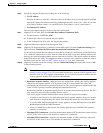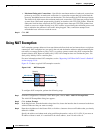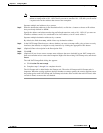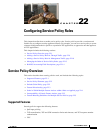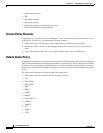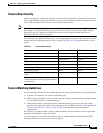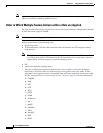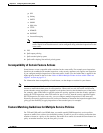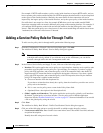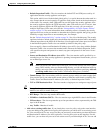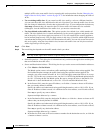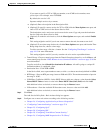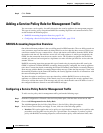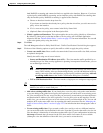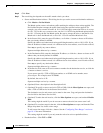
22-5
Cisco ASDM User Guide
OL-16647-01
Chapter 22 Configuring Service Policy Rules
Service Policy Overview
p. SIP
q. Skinny
r. SMTP
s. SNMP
t. SQL*Net
u. TFTP
v. XDMCP
w. DCERPC
x. Instant Messaging
Note RADIUS accounting is not listed because it is the only inspection allowed on management
traffic. WAAS is not listed because it can be configured along with other inspections for the
same traffic.
5. IPS
6. QoS output policing
7. QoS standard priority queue
8. QoS traffic shaping, hierarchical priority queue
Incompatibility of Certain Feature Actions
Some features are not compatible with each other for the same traffic. For example, most inspections
should not be combined with another inspection, so the security appliance only applies one inspection
if you configure multiple inspections for the same traffic. In this case, the feature that is applied is the
higher priority feature in the list in the “Order in Which Multiple Feature Actions within a Rule are
Applied” section on page 22-4.
For information about compatibility of each feature, see the chapter or section for your feature.
Note The Default Inspection Traffic traffic classification, which is used in the default global policy, is a special
shortcut to match the default ports for all inspections. When used in a rule, this traffic classification
ensures that the correct inspection is applied to each packet, based on the destination port of the traffic.
For example, when UDP traffic for port 69 reaches the security appliance, then the security appliance
applies the TFTP inspection; when TCP traffic for port 21 arrives, then the security appliance applies
the FTP inspection. So in this case only, you can configure multiple inspections for the same rule.
Normally, the security appliance does not use the port number to determine the inspection applied, thus
giving you the flexibility to apply inspections to non-standard ports, for example.
Feature Matching Guidelines for Multiple Service Policies
For TCP and UDP traffic (and ICMP when you enable stateful ICMP inspection), service policies
operate on traffic flows, and not just individual packets. If traffic is part of an existing connection that
matches a feature in a policy on one interface, that traffic flow cannot also match the same feature in a
policy on another interface; only the first policy is used.



